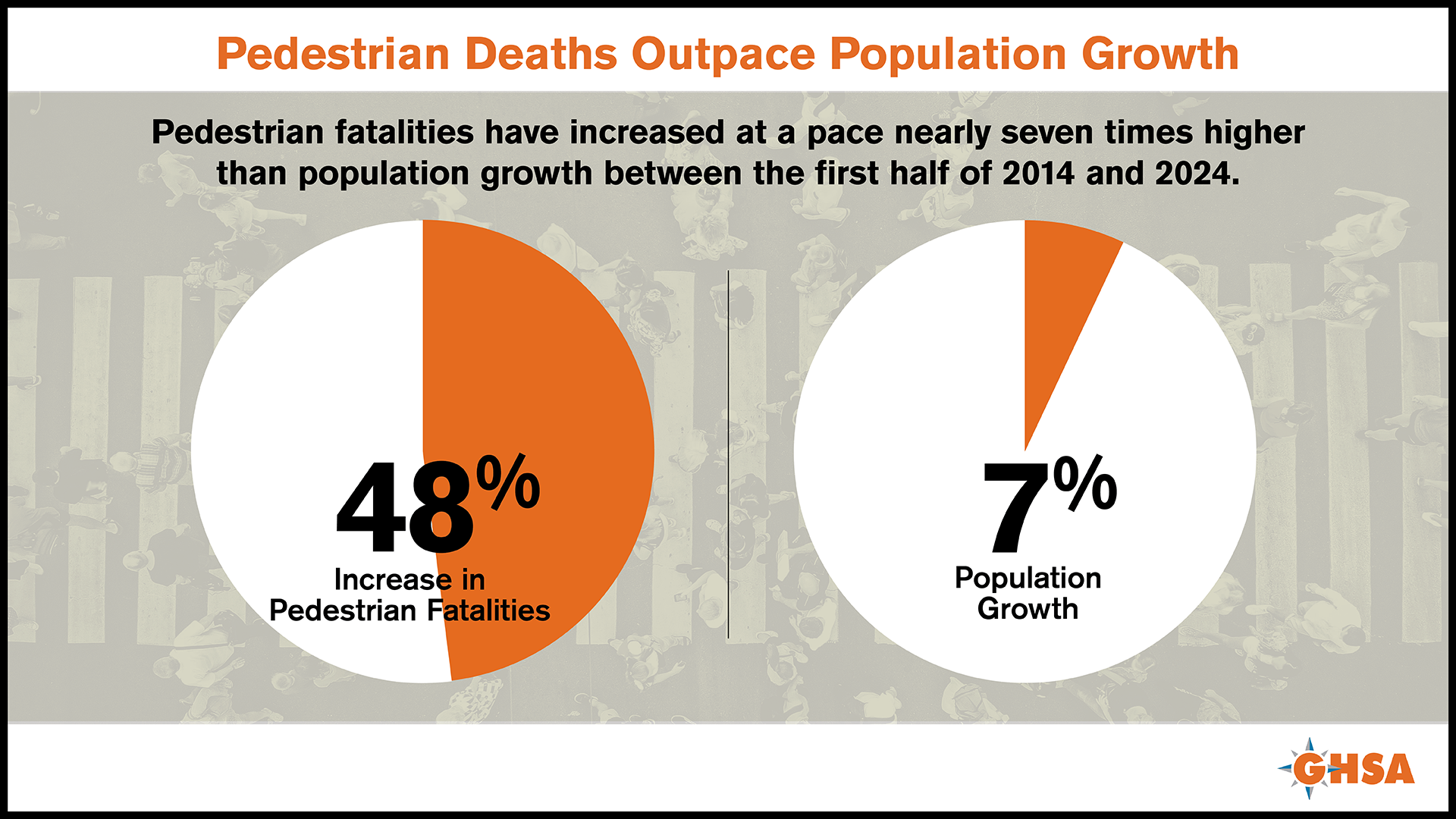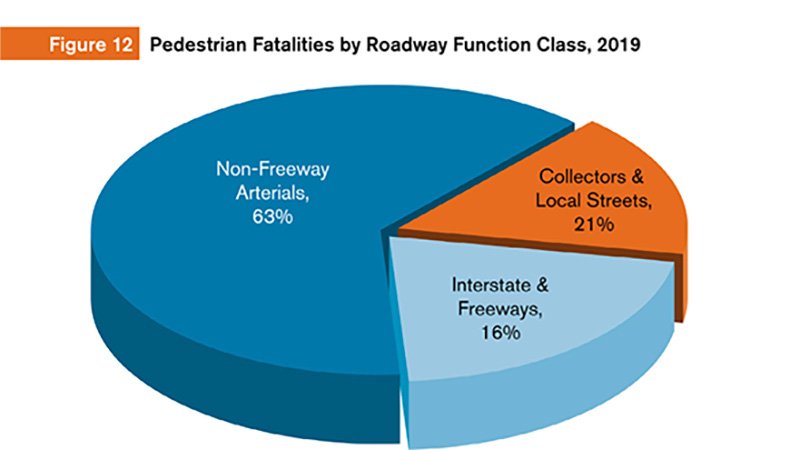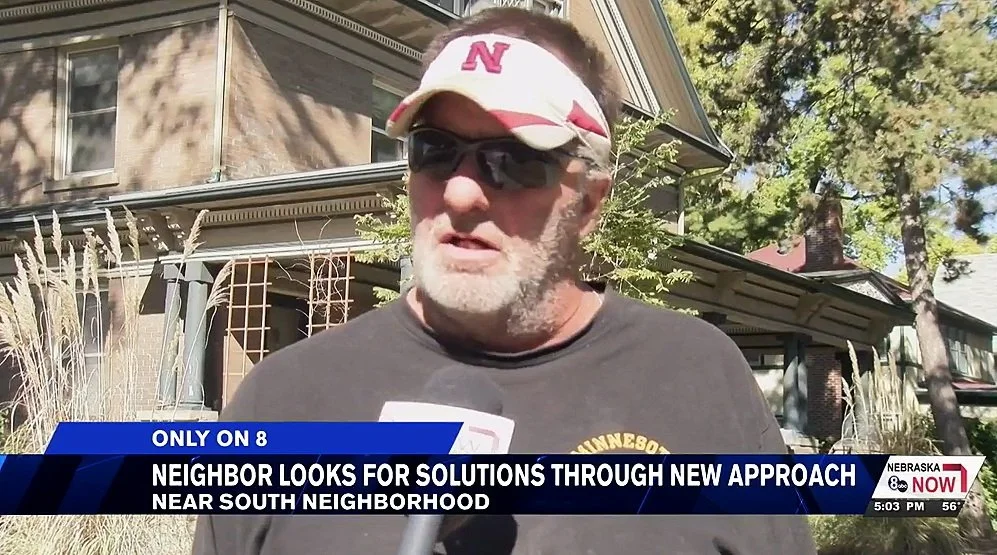Pedestrian Deaths Are Still Way Too High—Here's What Needs to Change
The latest report from the Governors Highway Safety Association (GHSA) shows that pedestrian deaths across the U.S. dipped 2.6% in the first half of 2024 compared to 2023.
That “good news” comes with a huge asterisk: these preventable tragedies are still nearly 50% higher than they were a decade ago.
And while some states made progress—like Tennessee, Colorado, and Washington—others went in the opposite direction. Nebraska saw a jaw-dropping 150% increase in pedestrian deaths. Connecticut’s numbers jumped more than 50%. These are not just statistics. These are lives lost on everyday streets, doing everyday things like walking to the store, catching the bus, or heading home from work.
In response, the GHSA offers a familiar set of recommendations: reduce pedestrian exposure, improve visibility, and encourage safer driving behavior. These are sensible suggestions—but it’s worth asking why they haven’t worked yet. Across North America, states have invested heavily in educational campaigns urging drivers to stay alert, put down their phones, and drive responsibly. Yet over the same period, serious crashes have continued to rise. Awareness alone isn’t solving the problem.
This report makes one thing clear: the status quo isn’t working. Focusing solely on individual actions overlooks the broader patterns and real progress depends on confronting the systems and environments that make serious crashes more likely in the first place: streets designed for speed over safety, intersections that put pedestrians in harm’s way, and land use patterns that force people into cars for every trip. If we want to reduce traffic deaths in a lasting way, we have to move beyond awareness campaigns and start redesigning the places where these crashes happen. Not in ten years. Tomorrow.
That’s the core of Strong Towns’ Crash Analysis Studio. Rather than assigning blame to drivers or pedestrians, this approach helps communities analyze crashes through the lens of environment and design. Instead of asking, “Who messed up?” the Crash Analysis Studio asks, “Why was this crash possible in the first place—and how do we make sure it doesn’t happen again?”
It’s a simple pivot—but it’s transforming outcomes.
For example, residents of Rochester, New York hosted a Crash Analysis Studio in the aftermath of a fatal crash at a signalized intersection. The analysis uncovered design and lighting deficiencies that contributed to the incident, leading to actionable recommendations to improve safety at the intersection.
The Near South Neighborhood Association (NSNA) in Lincoln, Nebraska, turned to the Crash Analysis Studio model not after a single crash, but as part of a broader push for community safety. Concerned by these recurring crashes, the NSNA partnered with Strong Towns to dig into local traffic patterns and street designs. “It’s not always, and it shouldn’t be someone else that comes along and saves us,” one of the residents who championed the Studio said. “It’s really us as people that need to come together. Like it’s not who, when and where? It’s us, here, now.”
Lincoln, Nebraska resident advocates for the Crash Analysis Studio approach crashes on the local news.
A group of New Haven, Connecticut residents—backed by Alders Caroline Tanbee Smith and Anna Festa—took a similar approach. Frustrated by a pattern of crashes at the intersection of Willow and Nicoll Streets in East Rock, where 15 crashes involving 42 people had occurred over three years, they organized their own Crash Analysis Studio.
"It's a really tough intersection," said Tanbee Smith. "It's one of those intersections that you don't (immediately) realize how challenging it is."
That challenge is amplified by its context: the intersection is just steps away from two schools as well as popular neighborhood destinations like the mActivity gym and East Rock Brewing Co. “It’s a dangerous intersection for many reasons,” said Festa, “and I’m hoping to see what we can do for traffic-calming measures.”
Inspired by Strong Towns’ approach but driven by local momentum, the Studio brought residents, city staff, and elected officials together to confront the dangerous design of the intersection head-on. Armed with a petition signed by nearly 200 neighbors, the group used crash data and lived experience to push for practical, people-first changes—like speed tables, sidewalk bump-outs, and a four-way stop. The message was clear: this wasn’t just about fixing an intersection, but about building a safer, more responsive city, one street at a time.
The New Haven residents holding speed radar guns. They adopted the Crash Analysis Studio model after a sequence of injurious and fatal crashes.
At Dordt College in Iowa, the Crash Analysis Studio model is now embedded in the transportation engineering curriculum, challenging the next generation of engineers to evaluate how their design decisions affect real-world safety—not just whether they meet code. “I think the biggest thing is looking at what is the impact that their role as engineers can have on the safety process, and having kind of the idea more deeper than what just the code tells them is correct,” noted Professor Jonathan Gingrich who is teaching the course.
When so many of the 44,450 fatal crashes cataloged in 2023 happened on the same roads, often less than a mile apart, it’s worth questioning how road design is contributing to that frequency and how engineers can work alongside leaders to proactively address unsafe road conditions. “When does the code break? And when do we encounter a setup that doesn't allow for what we're thinking about in the code to actually play out in real life?” Gingrich added. “And are we willing to be humble enough to recognize when that doesn't work, to make the change that needs to be made?”
This model is provoking a simple shift in mindset, but one with the power to save lives. And it’s one you can adopt immediately.
You Don’t Have to Wait for a Crash to Act
When your constituents call for safer streets, they aren’t asking for a study that takes years or a plan that sits on a shelf. They’re asking for solutions—now. Crashes are happening today, and communities are looking to you for leadership that responds with urgency and results.
The good news? You don’t need a massive budget or a multi-year capital plan to begin making change. What you do need is a way to focus attention, ask better questions, and start working with what you already have.
That’s exactly what the Crash Analysis Studio offers: a shift away from a system that blames individuals, and toward a practical, repeatable process that helps you identify dangerous patterns, test immediate interventions, and build momentum toward long-term improvements. It’s not about fixing everything at once—it’s about preventing the next crash tomorrow.
You have everything you need to start today. And if you need help, Strong Towns can provide expert, on-site help building the Crash Analysis Studio model that’s right for your place.










